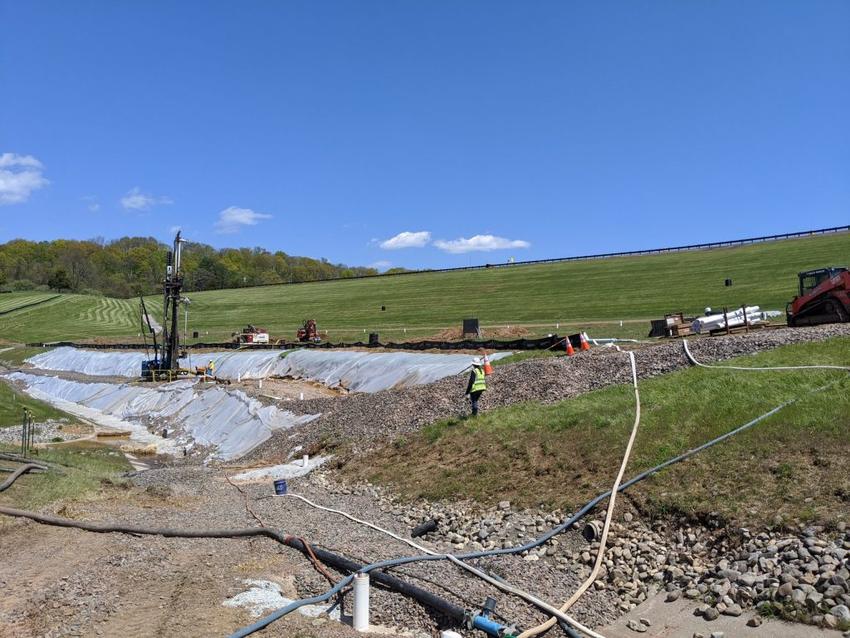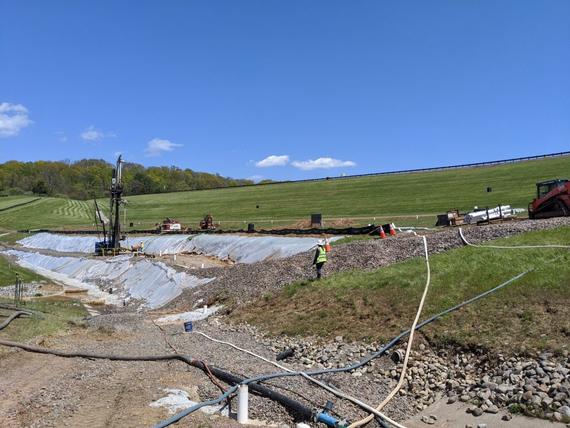Keller provides dewatering to facilitate dam rehabilitation.

The project
Originally constructed in 1962-63, the Round Valley Reservoir provides potable water for over 1.5 million residents. Following a site-specific study, the existing earthen dams (2) at the reservoir were classified as a high hazard. The necessary dam rehabilitation included downstream toe excavations to rock to facilitate the buttressing of the dams to extend their operating life.
The challenge
Before rehabilitation could begin, a dewatering program was required that included deep wells at the toe of each embankment to lower the water table below the excavations and within the dam embankments, allowing for stable and safe excavations.
The solution
The geology generally consists of interbedded fill layers, including silty sand, clay, and clayey sand with disintegrated rock above competent granite and diabase rock. The dewatering design required wells to be advanced through the overburden and into the underlying diabase rock. Keller was contracted to install the deep wells and perform the dewatering program.
Due to the large diameter hole needed to facilitate the well size, Keller used a down‐the‐hole hammer, with clean water from the reservoir as a drilling fluid for all drilling activities. The boreholes were drilled through the overburden and disintegrated rock by simultaneously advancing a nominal 14‐in. OD outer casing and modified 10‐inch OD inner drill rods with a 12‐inch percussion bit recessed inside the casing.
Operation of the dewatering system operated continuously for 3.5 years.

